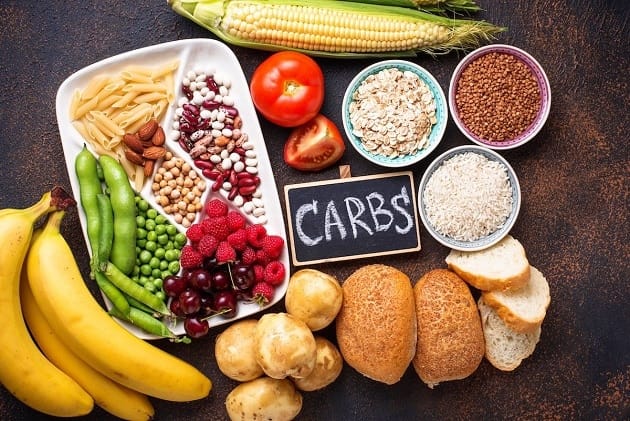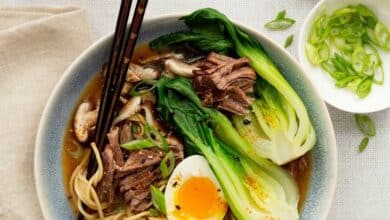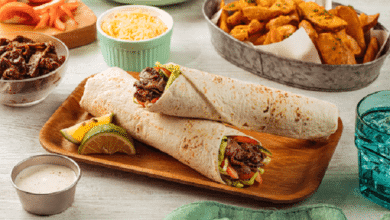Carbohydrates Food Chart Images: Ultimate Power Guide 2025

Carbohydrates often get misunderstood. Some people fear them because of weight gain myths, while others rely on them as their main energy source. The everything you need to know truth lies somewhere in between. As an experienced nutrition enthusiast, I can tell you that carbohydrates are the body’s primary source of energy, and knowing which carbs to eat is the real key to health.
To make things even easier, carbohydrates food chart images are widely used by dietitians and health experts because they visually show which foods belong to the “good carb” and “bad carb” categories. If you’ve ever wondered how to balance your diet with the right carbs, this guide will give you everything you need—definitions, examples, food charts, and real insights.
Also Read: Instagram bio
What Are Carbohydrates?
Carbohydrates are one of the three essential macronutrients (alongside proteins and fats). They break down into glucose (sugar), which fuels your brain, muscles, and organs.
Carbs can be divided into three main types:
-
Simple Carbohydrates – Sugars (fast-digesting, found in candies, sodas, white bread).
-
Complex Carbohydrates – Starches & fibers (slow-digesting, found in whole grains, legumes, vegetables).
-
Fiber – A non-digestible carb that supports digestion and gut health.
Why Are Carbohydrates Important?
Despite the negative hype, carbs are essential. Here’s why:
-
Energy Source – Your body’s main fuel for daily activities.
-
Brain Function – Glucose powers memory, learning, and concentration.
-
Muscle Health – Carbs replenish glycogen after exercise.
-
Digestive Support – Fiber prevents constipation and maintains gut balance.
-
Nutrient Carrier – Carbs often come with vitamins, minerals, and antioxidants.
Carbohydrates Food Chart Images Explained
Food charts with images are great because they:
-
Show visual grouping of high-carb vs. low-carb foods.
-
Help kids and adults make quick dietary choices.
-
Work as a ready reference for meal planning.
Here’s a sample Carbohydrate Food Chart (Text Format) you can imagine with images for quick reference:
Carbohydrates Food Chart (with Examples)
| Food Category | Examples | Carb Quality | Notes |
|---|---|---|---|
| Whole Grains | Brown rice, oats, quinoa, whole wheat bread | Complex carbs | Rich in fiber & nutrients |
| Vegetables | Sweet potato, corn, peas, pumpkin | Complex carbs | Slow-digesting, nutrient-rich |
| Fruits | Apples, bananas, oranges, mango | Natural sugars + fiber | Great for quick energy |
| Legumes | Lentils, beans, chickpeas | Complex carbs | Excellent protein + fiber combo |
| Dairy | Milk, yogurt | Simple carbs (lactose) | Provides protein & calcium |
| Refined Foods | White bread, pastries, soda, candy | Simple carbs | Low fiber, quick spikes |
| Processed Snacks | Chips, instant noodles | Refined carbs | Should be limited |
Good Carbs vs. Bad Carbs (with Images Explanation)
When people say “cut carbs,” they usually mean “cut bad carbs.” But not all carbs are the same.
Good Carbs (Complex & Fiber-rich)
-
Whole grains (brown rice, oats, barley)
-
Fresh fruits and vegetables
-
Lentils and beans
-
Nuts and seeds
These release energy slowly, keep you full, and maintain stable blood sugar.
Bad Carbs (Refined & Sugary)
-
White bread, pasta, pastries
-
Sugary drinks and candies
-
Processed packaged foods
-
Fried fast food
These cause blood sugar spikes, weight gain, and low energy crashes.
Carbohydrates Food Chart Images for Weight Management
When it comes to weight loss or muscle gain, carbs play different roles.
| Goal | Recommended Carbs | Example Foods |
|---|---|---|
| Weight Loss | Low-GI carbs, high fiber | Oats, quinoa, leafy greens |
| Muscle Gain | Balanced carbs + protein | Rice, sweet potato, bananas |
| Energy Boost | Moderate simple carbs | Fruits, yogurt, smoothies |
| Diabetes-Friendly | Controlled low-GI carbs | Lentils, chickpeas, barley |
Carbohydrates Intake Recommendations
According to WHO and nutrition guidelines:
-
Carbohydrates should make up 45–65% of daily calories.
-
For a 2000-calorie diet, that’s about 225–325 grams of carbs/day.
But the quality of carbs matters more than the quantity.
Personal Details Table (Sample)
Here’s a sample format showing how a person’s carb needs might look:
| Detail | Example |
|---|---|
| Name | Priya Sharma |
| Age | 28 Years |
| Weight | 62 kg |
| Height | 5’4” |
| Activity Level | Moderate (gym 3x a week) |
| Carb Requirement | ~250g/day |
| Preferred Sources | Brown rice, oats, lentils, fruits |
| Goal | Maintain weight & improve energy |
How to Read Carbohydrates Food Chart Images Correctly
When looking at any carb food chart with pictures:
-
Check Portion Size – 1 banana ≠ 1 apple in carb count.
-
Look for GI (Glycemic Index) – Low GI foods = better sugar control.
-
Notice Fiber Content – More fiber = better satiety.
-
Avoid Hidden Sugars – Processed foods often disguise sugar.
FAQs on Carbohydrates Food Chart Images
Q1: What are carbohydrates food chart images?
Ans: They are visual charts showing food groups rich in carbohydrates with pictures for easy understanding.
Q2: Which foods are best sources of good carbs?
Ans: Whole grains, lentils, fruits, and vegetables are the healthiest carb sources.
Q3: Can I eat carbs while trying to lose weight?
Ans: Yes, but focus on complex carbs like oats, quinoa, and legumes instead of refined carbs.
Q4: How many carbs should I eat daily?
Ans: Around 45–65% of your daily calories, depending on activity and goals.
Q5: Are carbs bad for diabetes patients?
Ans: Not all carbs—low-GI carbs (lentils, beans, barley) are beneficial when portion-controlled.
Conclusion
Carbohydrates food chart images are powerful tools to understand and visualize which foods fuel your body the understand the importance right way. Instead of fearing carbs, focus on choosing complex, fiber-rich sources while limiting refined and sugary foods.
By following the right food chart and balancing your intake, you can maintain energy, support weight goals, and live a healthier life.

